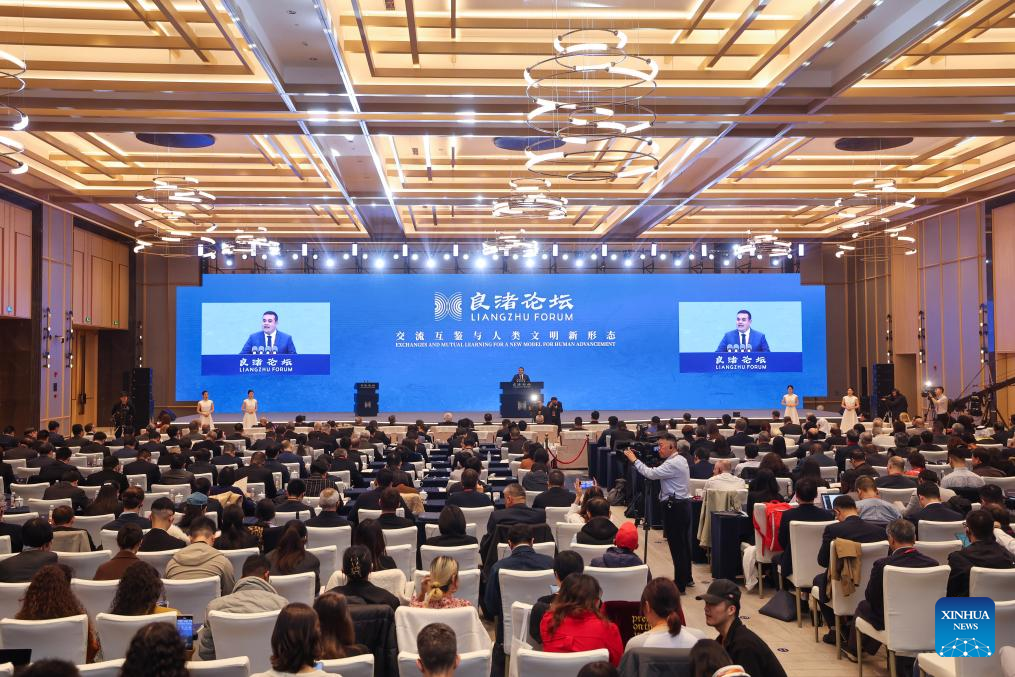
A guest speaks at the opening ceremony of the Second Liangzhu Forum in Hangzhou, east China's Zhejiang Province, Nov. 25, 2024. (Xinhua/Xu Yu)
HANGZHOU, Nov. 25 (Xinhua) -- On the UNESCO world heritage map for five years, China's archaeological ruins of Liangzhu, in parallel with the Aegean Civilization in Greece, has gained growing international recognition with the progress of archaeological research and cultural exchanges.
Under the theme of "exchanges and mutual learning for a new model of human progress," the Second Liangzhu Forum being held in Hangzhou, the capital of east China's Zhejiang Province, from Monday to Wednesday, has gathered more than 300 Chinese and foreign cultural officials, diplomats, scholars, writers, archaeologists and musicians from more than 60 countries and regions to tap the rich cultural resources of Liangzhu further.
Sub-forums and international seminars on archaeology, literature, music and art will be held during the forum, inviting experts and scholars to engage in interdisciplinary and cross-border academic dialogues.
The Liangzhu ruins gained UNESCO World Heritage status in 2019 as a testimony to the existence of Chinese civilization at least 5,000 years ago.
More than 350 sites of the Liangzhu civilization, which date back around 5,000 years, have been discovered in the lower reaches of China's longest river, the Yangtze.
Among the most significant archaeological findings is the ancient Liangzhu city, large expanses of prehistorical rice paddies--the oldest dating back over 6,000 years, and a trove of jade carving artifacts as well as agricultural tools such as plows.
Chen Guangsheng, director of the Zhejiang Provincial Department of Culture, Radio, Television and Tourism, said the ruins of Liangzhu comprise the ancient city, a water conservancy system and suburban settlements.
Using remote sensing, geographic information, and artificial intelligence technologies, archaeologists have figured out that the ancient civilization boasted a water conservancy network with more than 30 dams for water control and drainage.
Chen said that in the late period of the Liangzhu culture, people extended the city walls and built a well-structured city layout.
Colin Renfrew, academician of the Royal Academy of Sciences of the U.K. and professor of Cambridge University, believed that the Neolithic Age in China is "far underestimated."
"Liangzhu almost brings the origin of China's national society to the same height as the ancient civilizations of Egypt, Mesopotamia and India. They almost existed in the same period," said Renfrew when he joined the study of Liangzhu's application for world heritage listing.
Among the most important cultural symbols of Liangzhu, unearthed jadeware is a signature element of the Liangzhu culture, which has inspired a mascot design for the 19th Asian Games held in Hangzhou last year.
One of the games' three mascots is called "Congcong," which got its name and design from "Yucong," or "Jade Cong," a ritual jade article with a quadrilateral exterior and a circular inside. The Asian Games flame was first lit at the site of the ancient city of Liangzhu in Zhejiang before being carried elsewhere, which further exemplified the significance of Liangzhu.
Only months after the Liangzhu Ruins were inscribed on the UNESCO World Heritage List, the area of the Liangzhu ancient city site in Hangzhou was fully covered by the 5G network so that visitors could enjoy faster mobile internet surfing in all venues and tourist routes in the ruins park.
In the park, with a protected area of 100 square km and the core city ruins space of 8 million square meters, technicians use digital technologies such as augmented reality, artificial intelligence, and large language models to provide an appealing visiting experience for the audience to see the Liangzhu culture that has been unveiled so far.
A local publisher in Zhejiang has signed a copyright exporting agreement with publishers from Egypt and Romania to promote the English version of a Chinese children's book about Liangzhu.
Titled "Ancient City of Liangzhu," the book displays a panoramic view of Liangzhu 5,000 years ago in three parts: water, jade and city.
The Liangzhu Forum, initiated last year, invited Chinese and foreign archaeologists, cultural experts, and artists to engage in exchanges in cultural research and extended academic discussions. During this year's forum, the Liangzhu International Archaeological Center is expected to encourage more international cooperation work to research the ancient culture. ■
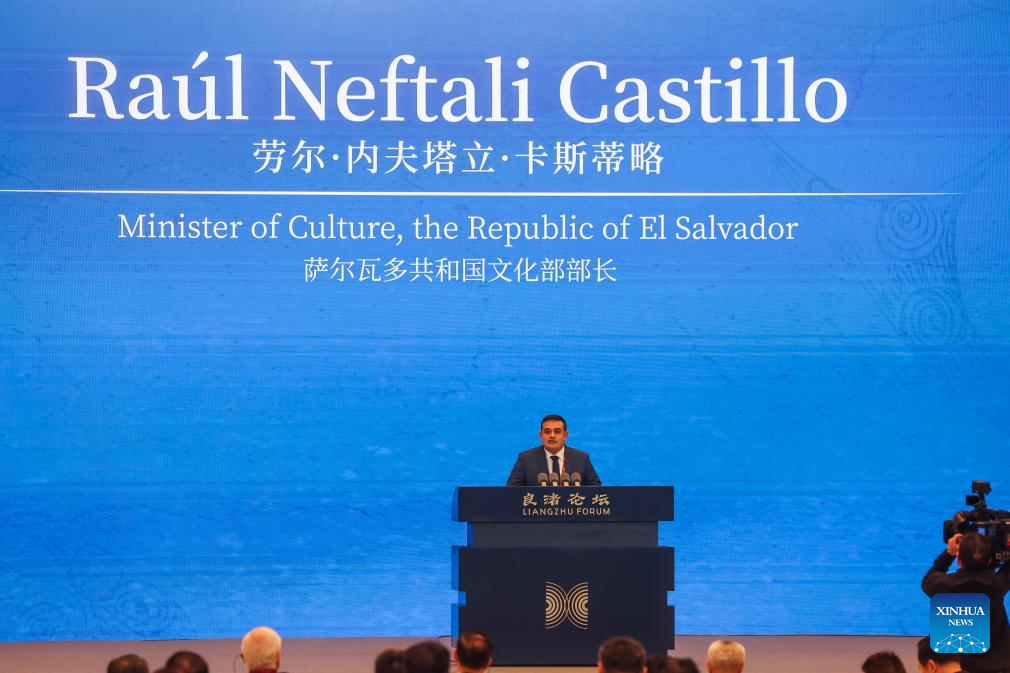
Raul Neftali Castillo, Minister of Culture of the Republic of El Salvador, speaks at the opening ceremony of the Liangzhu Forum in Hangzhou, east China's Zhejiang Province, Nov. 25, 2024. (Xinhua/Xu Yu)
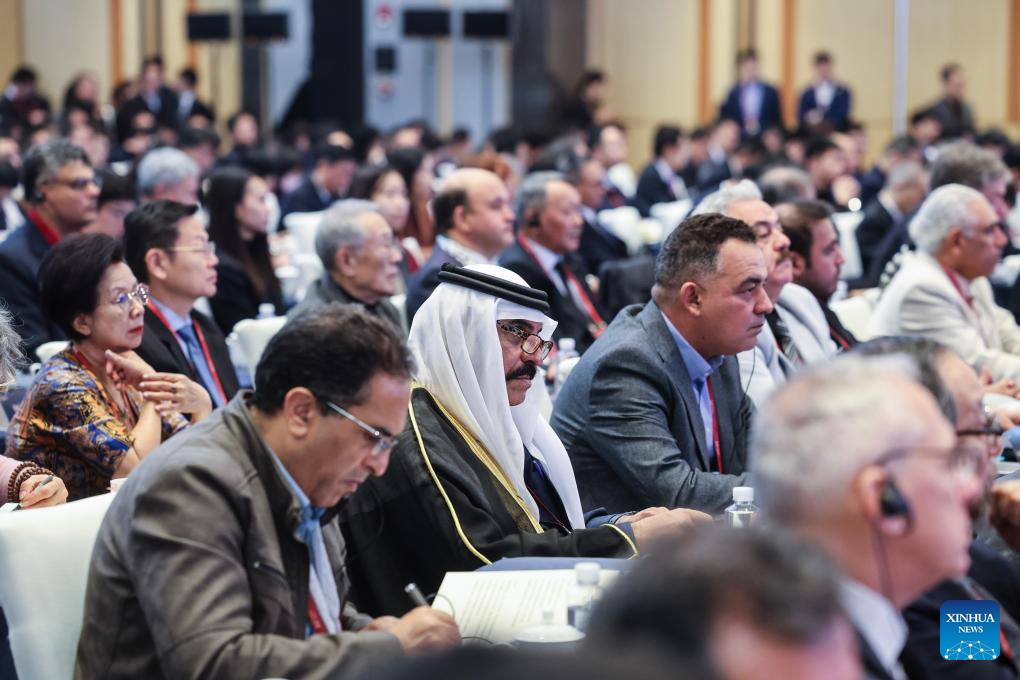
Guests attend the opening ceremony of the Second Liangzhu Forum in Hangzhou, east China's Zhejiang Province, Nov. 25, 2024. (Xinhua/Xu Yu)
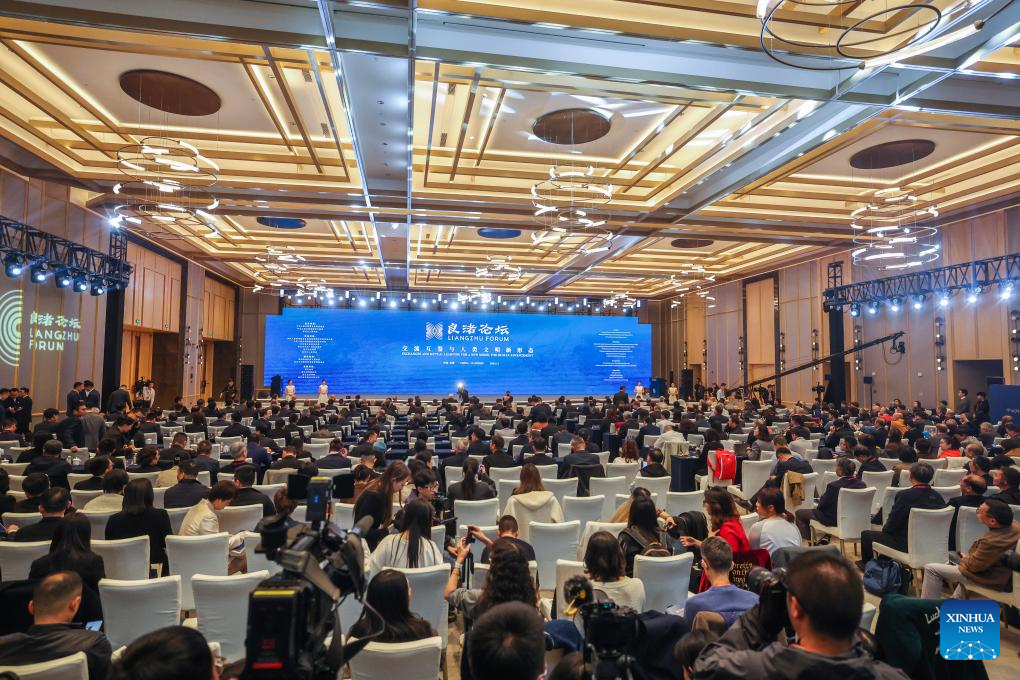
This photo taken on Nov. 25, 2024 shows the opening ceremony of the Second Liangzhu Forum in Hangzhou, east China's Zhejiang Province. (Xinhua/Xu Yu)

The President of the Iranian Academy of Arts Majid Shah-Hosseini speaks at the opening ceremony of the Second Liangzhu Forum in Hangzhou, east China's Zhejiang Province, Nov. 25, 2024. (Xinhua/Xu Yu)
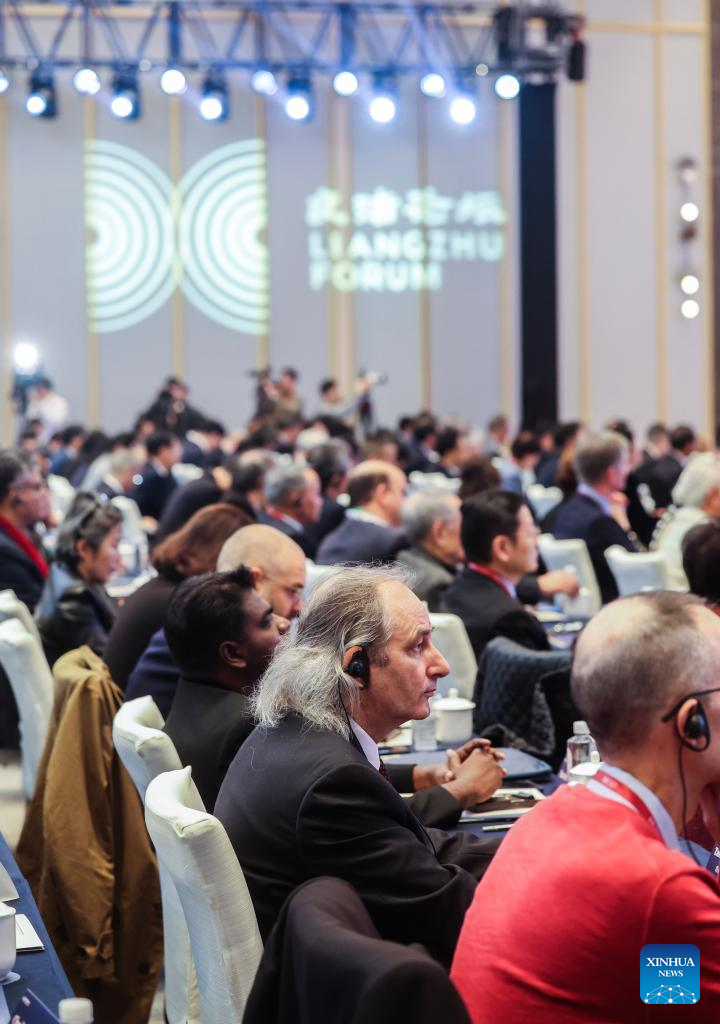
Guests attend the opening ceremony of the Second Liangzhu Forum in Hangzhou, east China's Zhejiang Province, Nov. 25, 2024. (Xinhua/Xu Yu)



